A yoga teacher recommends these four poses for better running
Moves that can improve your running, recovery and risk of injury
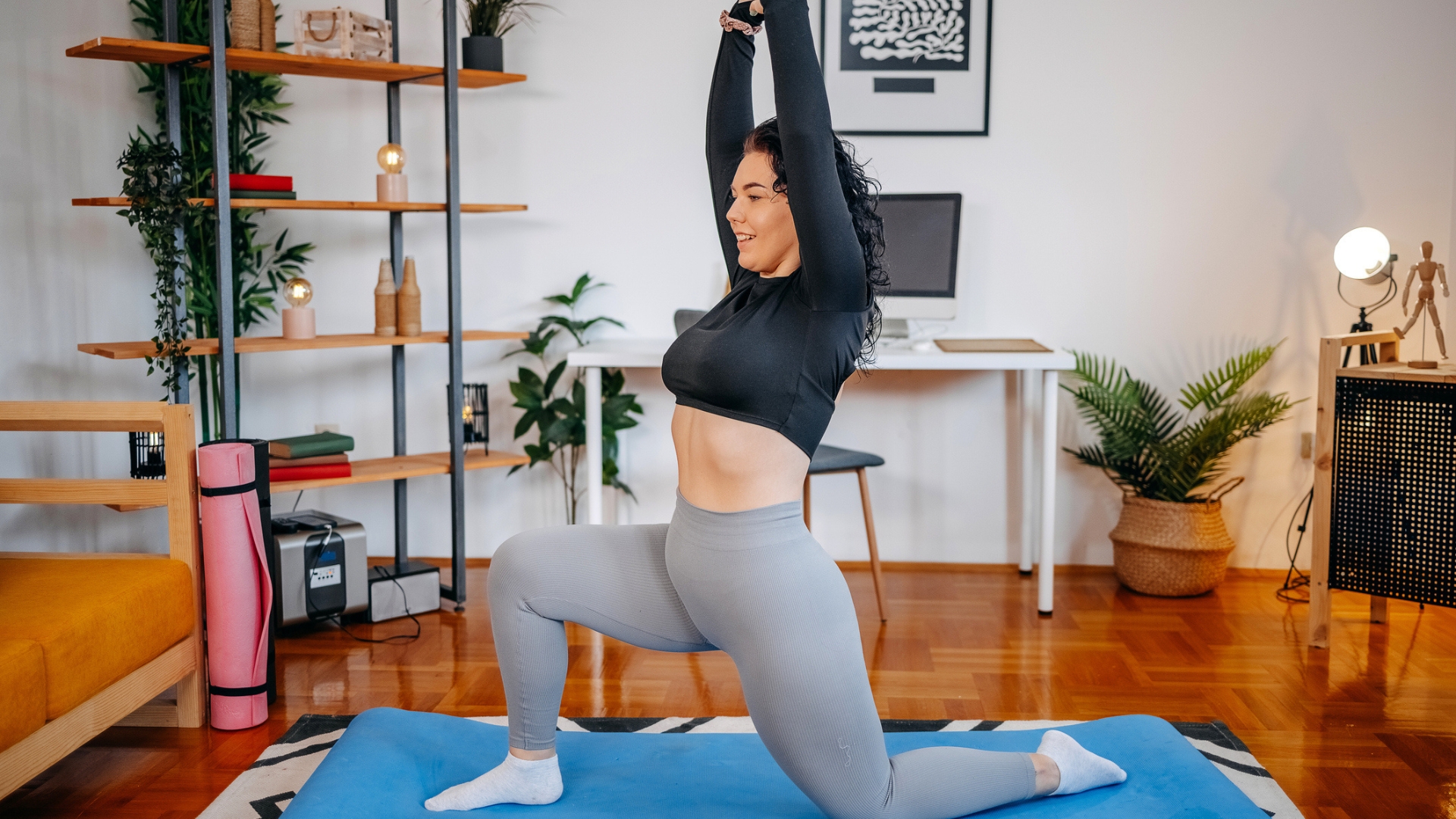

Yoga can enhance flexibility, balance and mobility while alleviating muscle tightness—making it an excellent complement to running. However, many runners struggle to know where to begin or attempt to follow advanced yoga routines that aren’t tailored to their needs.
Ashley Galvin, a yoga instructor at Alo Moves has shared four essential yoga poses for runners with Fit&Well. Practicing this routine consistently—either before or after a run—can help reduce your injury risk and even improve running performance.
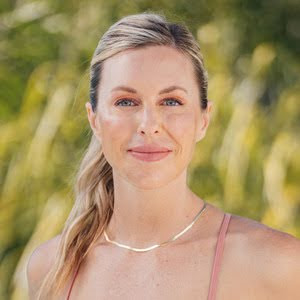
Galvin began teaching yoga in 2011 and has since taught workshops, retreats, and classes all over the world. Her strong, dynamic flows help cultivate body awareness, empower others to embrace their unique gifts, and give students a deep understanding of their yoga practice.
Garland pose (malasana)
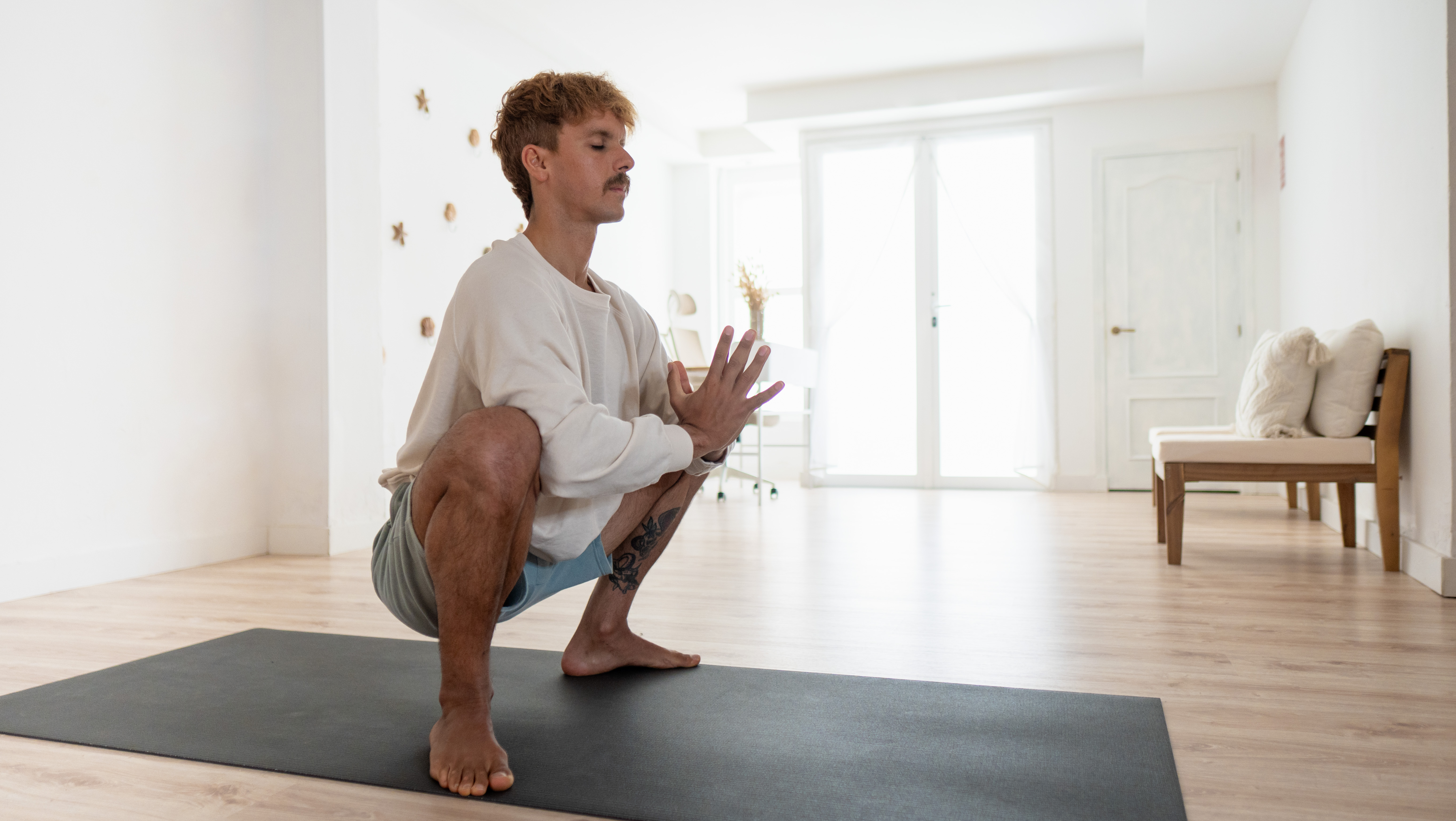
- Stand with your feet hip-width apart or slightly wider, toes pointing slightly outward.
- Bend your knees and lower your hips into a deep squat, keeping your chest lifted and your back straight.
- If your heels don’t touch the ground, try opening your feet a bit wider or place a blanket or cushion under them for support.
- Hold for 20-60 seconds or as long as comfortable.
How it helps: "Malasana deeply stretches the hip flexors, inner thighs and groin, which can become tight from running," Galvin says. This pose also helps improve ankle mobility and strength—essential for running efficiency and stability.
Downward-facing dog (adho mukha svanasana)
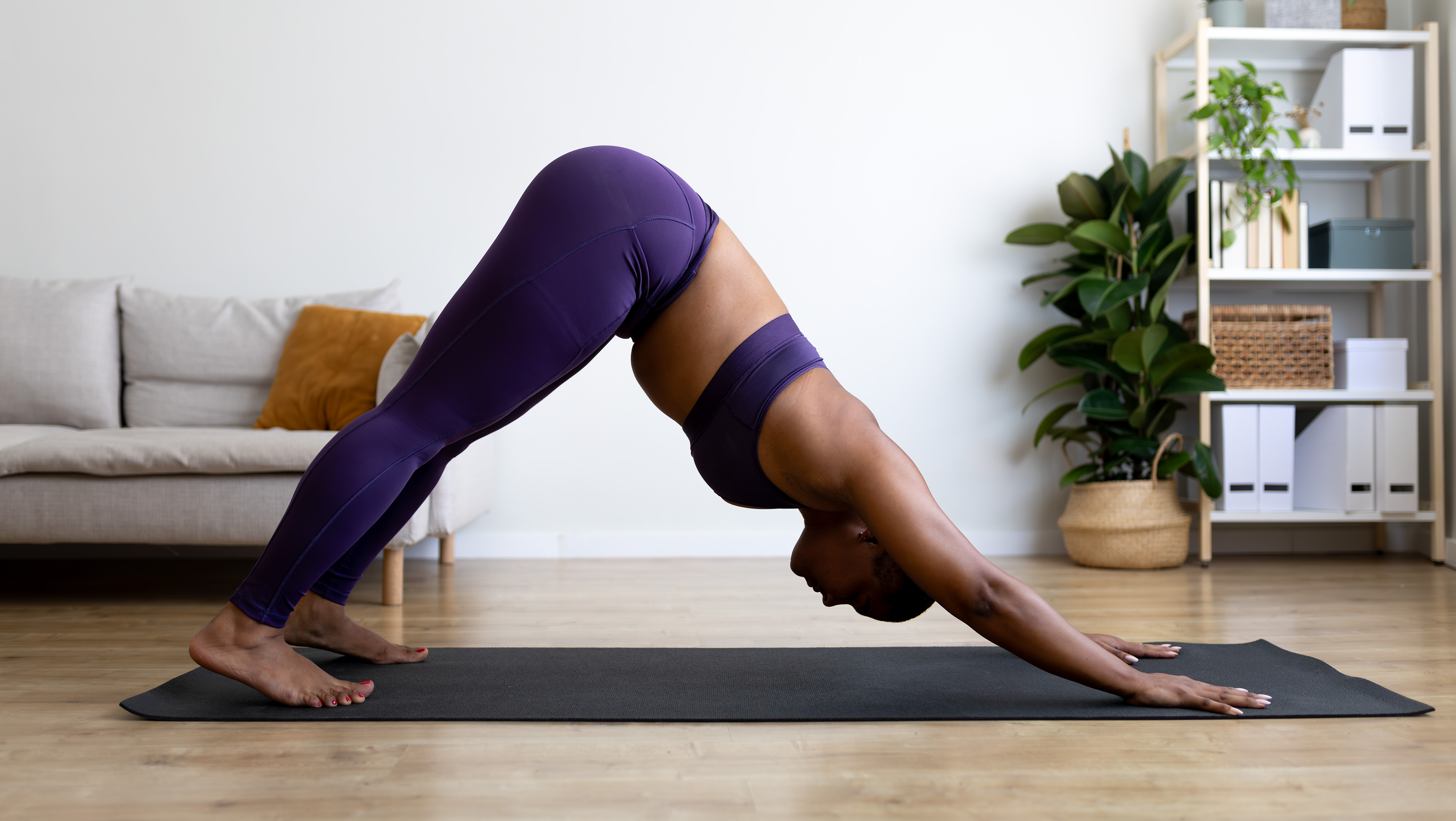
- Begin on your hands and knees with your wrists directly under your shoulders and knees under your hips.
- Tuck your toes and slowly lift your hips toward the ceiling to create an inverted V-shape with your body, extending your spine so it’s flat.
- Feet should be hip-width apart, keeping a bend in your knees if your heels don’t touch the floor.
- Press your hands firmly into the floor, keeping your arms straight.
- Hold for 30 seconds to 2 minutes allowing gentle movement to deepen the stretch in your hamstrings, calves and back.
How it helps: Downward dog is one of the best yoga stretches for beginners, improving shoulder mobility and alleviating lower-body tension.
"The downward-facing dog pose stretches the hamstrings, calves, quads, and spine and promotes overall body strength and balance," says Galvin.
Runner’s lunge (anjaneyasana)
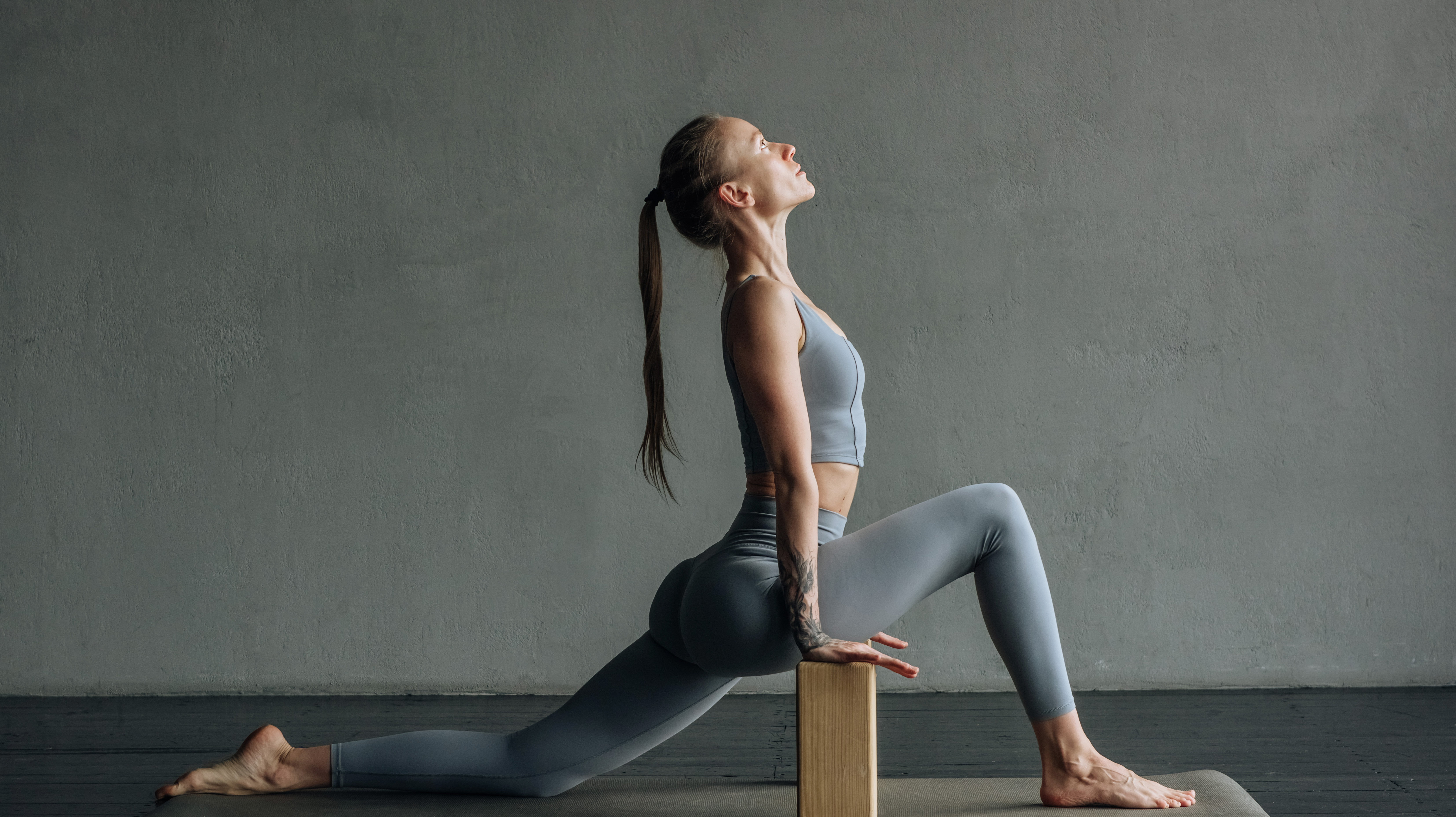
- From a standing position, step one foot back, bending your front knee to roughly a 90° angle, extending the other leg behind you so the top of your foot is flat on the floor.
- Rest your hands on your front knee or use yoga blocks for balance.
- Gently press your hips forward to deepen the stretch.
- Hold for five to 10 breaths.
How it helps: Galvin says this lunge is a deep stretch for the hip flexors, quads and hamstrings, which are all important when running. This pose also improves lower-body strength and stability.
Reclining hand-to-big-toe pose (supta padangusthasana)
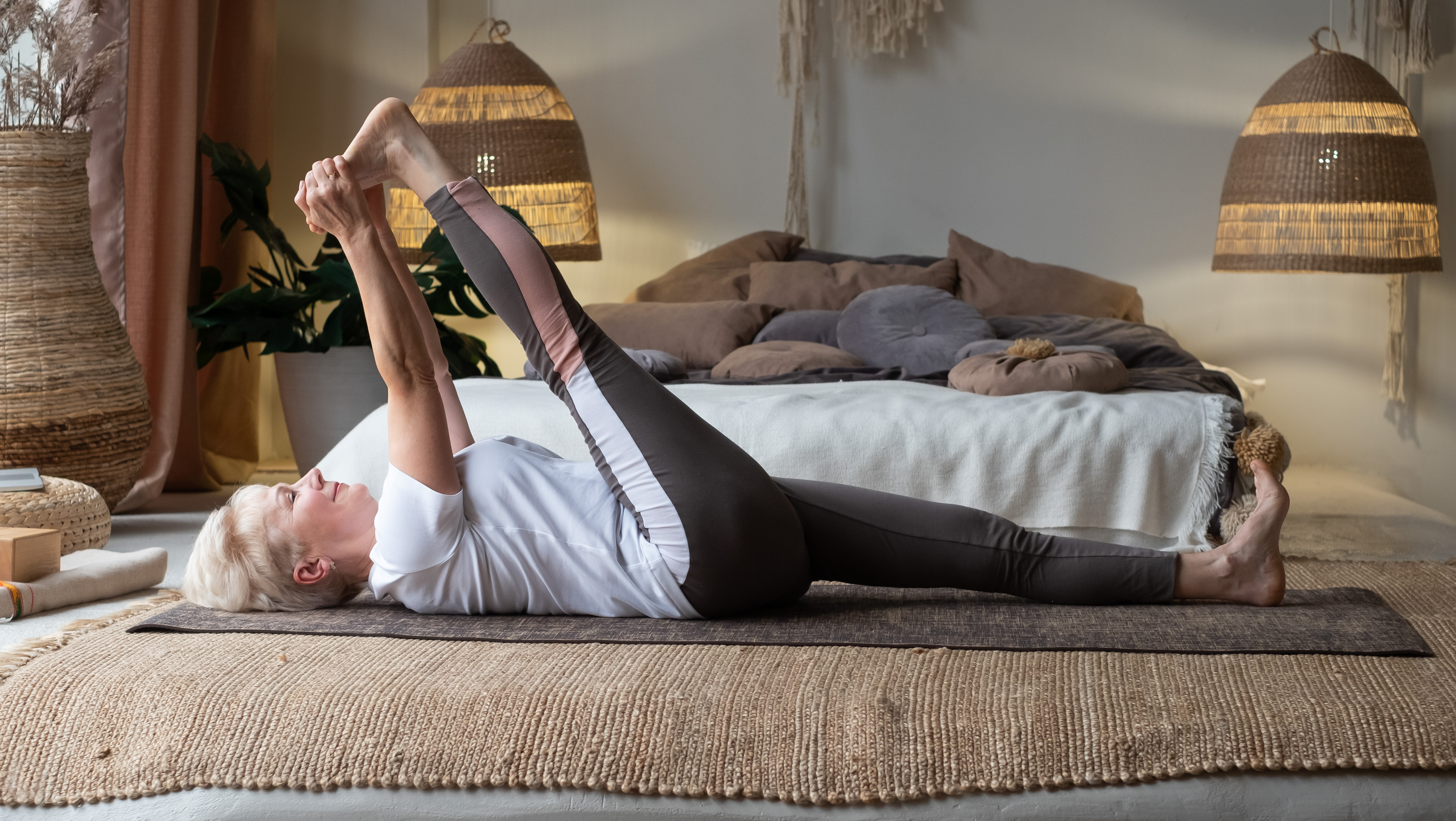
- Lie on your back with your legs extended and arms by your sides, palms facing down.
- Bend one knee and bring it toward your chest.
- Hold your right calf or the back of your thigh with both hands. If you have a yoga strap, you can loop this around the arch of your foot. Keep your other leg extended and relaxed on the floor.
- Slowly straighten your lifted leg upward, keeping a slight bend in the knee if you have tight hamstrings.
- Reach your hands to hold your big toe or hold the strap.
- Hold for as long as comfortable or for around 10 breaths.
How it helps: According to Galvin, this pose is ideal for stretching the hamstrings, which are often tight in runners. It also opens up the lower back and improves ankle mobility.
Start your week with achievable workout ideas, health tips and wellbeing advice in your inbox.

Matthew is a content writer for health and wellness brands. He has a degree in Sport, Exercise and Physical Activity from the University of Durham and has written for brands like Livestrong, STYRKR, and the Road Cycling Academy. When he’s not writing, he enjoys training, watching Formula One, and reading a good novel.